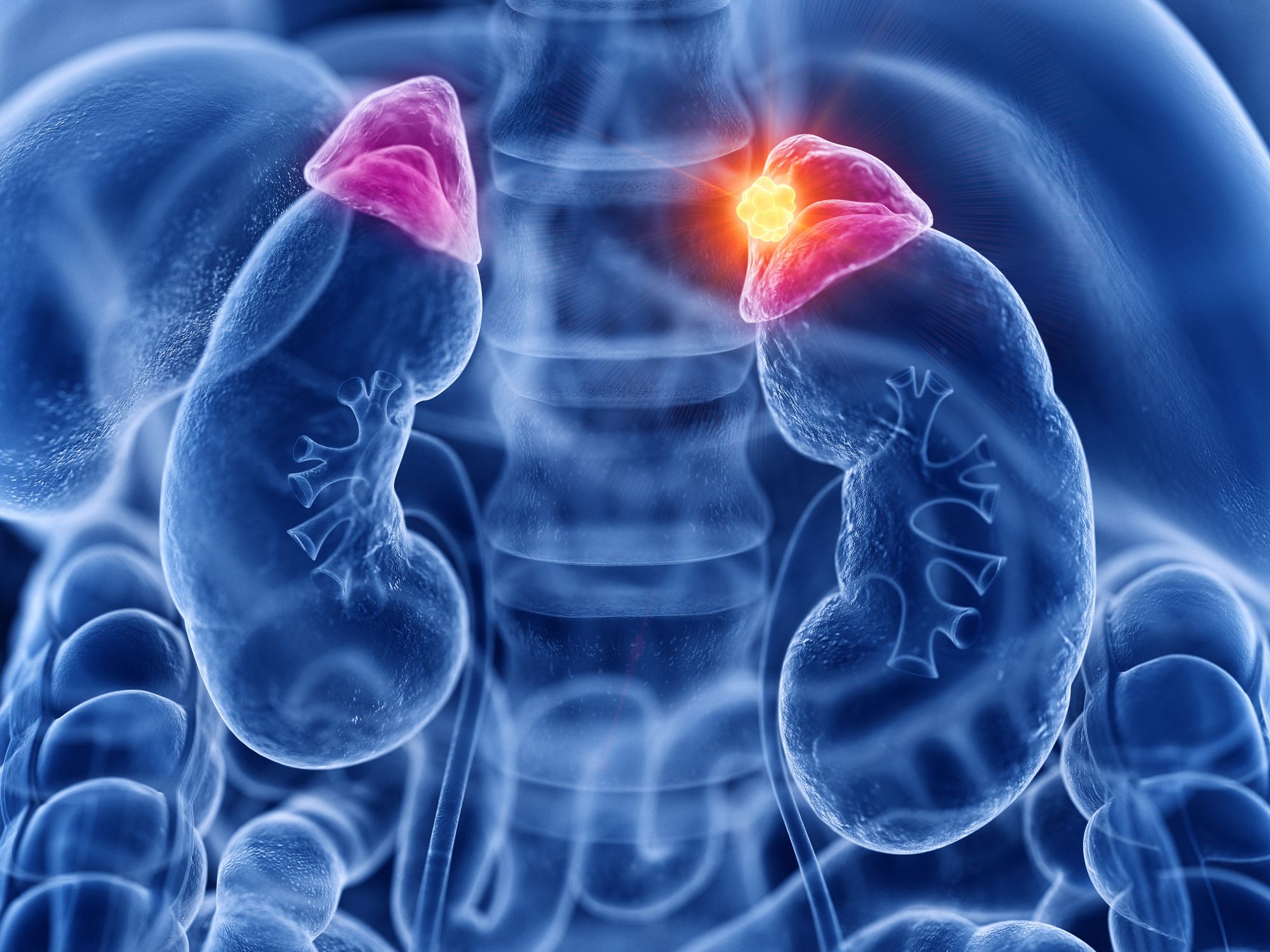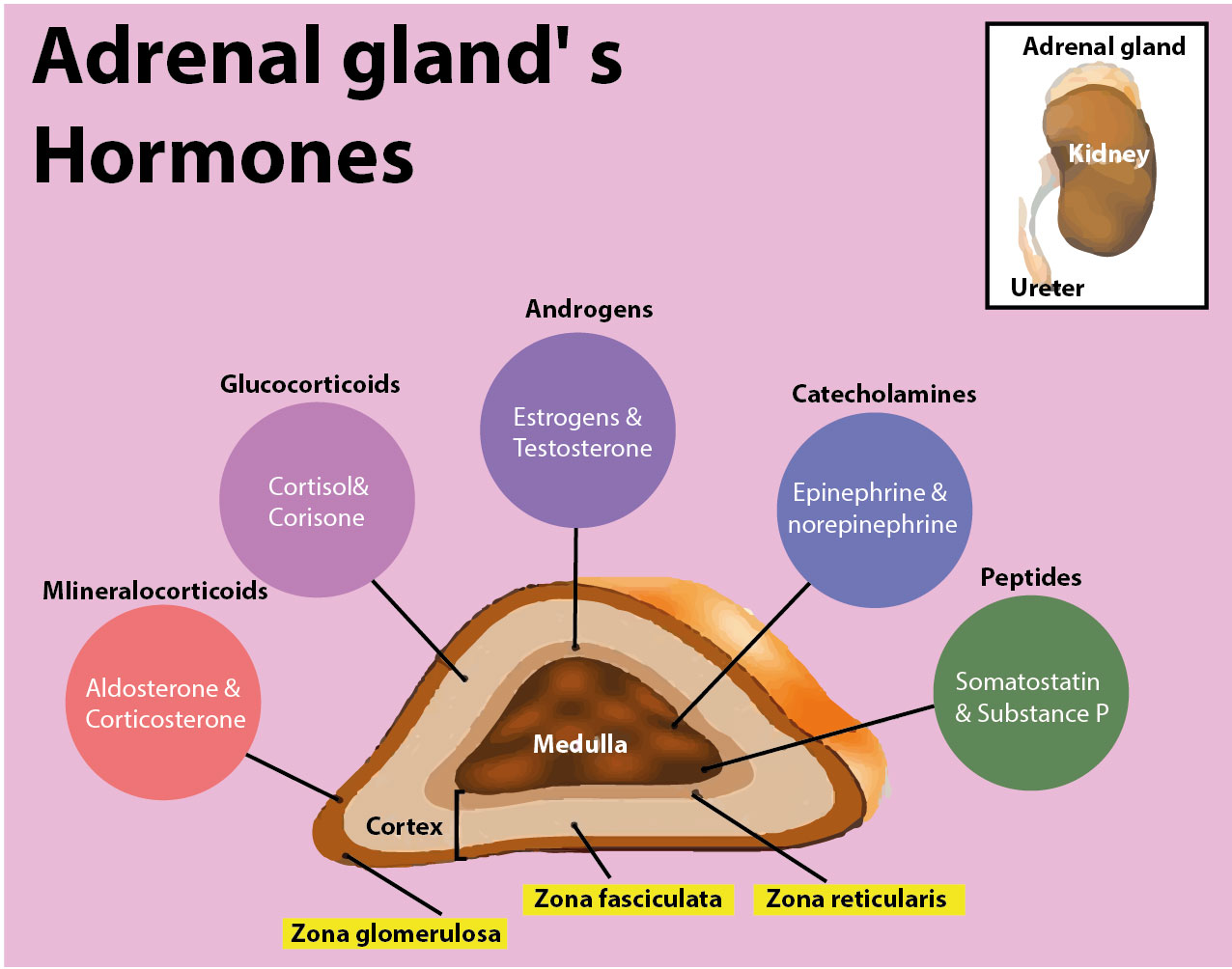The adrenal glands play a crucial role in maintaining hormone balance in the body. These small, triangular-shaped glands located on top of each kidney are part of the endocrine system and are responsible for producing several important hormones that regulate various bodily functions.

Structure and Function
The adrenal glands consist of two main parts: the adrenal cortex and the adrenal medulla, each producing different hormones with distinct functions.
- Adrenal Cortex: This outer region of the adrenal gland is divided into three zones, each responsible for producing specific hormones:
**Mineralocorticoids (e.g., Aldosterone)**: These hormones help maintain salt and water balance, which is crucial for regulating blood pressure. Aldosterone acts on the kidneys to retain sodium and water while excreting potassium[2][4].
**Glucocorticoids (e.g., Cortisol)**: Known as the body’s natural steroid, cortisol plays a role in the stress response, metabolism, and immune function. It helps regulate blood glucose levels and has anti-inflammatory effects[2][3].
**Adrenal Androgens**: These include hormones like dehydroepiandrosterone (DHEA) and testosterone, which are involved in the development of male characteristics and influence female body hair growth after puberty[2][4].

- Adrenal Medulla: This inner part of the adrenal gland produces catecholamines, such as adrenaline (epinephrine) and noradrenaline (norepinephrine). These hormones are crucial for the “fight or flight” response, increasing heart rate, blood pressure, and energy availability during stress[2][4].
Hormonal Imbalances and Disorders
The adrenal glands can cause health issues by producing too little or too much of certain hormones, leading to hormonal imbalances:
**Adrenal Insufficiency (Addison’s Disease)**: This occurs when the adrenal glands do not produce enough hormones, particularly cortisol and aldosterone, leading to symptoms like fatigue, low blood pressure, and weight loss[3].
**Cushing’s Syndrome**: Excessive production of cortisol can lead to Cushing’s syndrome, characterized by weight gain, high blood pressure, and changes in skin appearance[3].
**Hyperaldosteronism**: Overproduction of aldosterone can result in high blood pressure and low potassium levels, a condition known as primary hyperaldosteronism or Conn’s Syndrome[2].
Regulation and Feedback Mechanisms
The adrenal glands are regulated by the hypothalamic-pituitary-adrenal (HPA) axis. The hypothalamus releases corticotropin-releasing hormone (CRH), stimulating the pituitary gland to produce adrenocorticotropic hormone (ACTH), which in turn prompts the adrenal glands to secrete cortisol and other hormones. This system operates through a negative feedback loop to maintain hormonal balance[3][5].
Overall, the adrenal glands are essential for responding to stress, regulating metabolism, and maintaining electrolyte balance, all of which are vital for overall hormonal equilibrium in the body.
Read About Menopause and Adrenal Health
Citations:
[1] https://www.zrtlab.com/media/1051/adrenal-stress-booklet.pdf [2] https://www.yourhormones.info/glands/adrenal-glands/ [3] https://www.hopkinsmedicine.org/health/conditions-and-diseases/adrenal-glands [4] https://www.adrenal.com/adrenal-gland/function [5] https://my.clevelandclinic.org/health/body/23005-adrenal-gland